Zines: What Can You Glean?
Every Wednesday, in Room 334, students gather to sort through magazine scraps, scouring for inspiration. Others can be seen hunched over sheets of paper, drafting and drawing, folding their work into booklets. What are they making? Zines, of course!
“What is a zine?” you may be wondering, and you are not alone. “I see zines everywhere,” says Joyce Zhang, a member of the MBHS Lit Zine Scene club since late last year. “On social media and other places where people post their art.” According to Wikipedia, “A zine is a small-circulation self-published work of original or appropriated texts and images, usually reproduced via a copy machine.” While that may be the textbook definition, in my reporting, I have found that zines mean different things to different people.
“Zines were my first love,” says junior Anna Calvarino, who co-leads the Lit Zine Scene with fellow 11th grader Madison Blum. In the club, students meet weekly to make zines, focusing on an overarching theme. Eventually, the students publish their zines in an anthology. Calvarino, author of a tongue-in-cheek zine about anthropomorphized fruit called “Fruit Has Feelings,” says: “I think life is a zine.”
A zine “gives people a way to express creative freedom,” explains Zhang. Zines “can be anything.” The club has explored themes in their publications as seemingly random as “Say It With Your Chest,” “Tables” and “Rage.” All of the themes are suggested and voted on by students, who then individually create zines based on their interpretation of the motif.
“My table zine was about ‘questions on the table,’ and it was supposed to be kind of absurd, and a tad existential, […] because I feel like teenagers talk about existential threats a lot,” shares Finnegan Fox Kelly, a sophomore at MBHS. One spread in his zine features a tiny figure next to a semi-abstract alien life form, asking the rhetorical question: “Do I matter?” The facing page answers the question with an emphatic “NO!” in jagged lettering, but accompanied by a reassuring footnote: “But that is okay.”
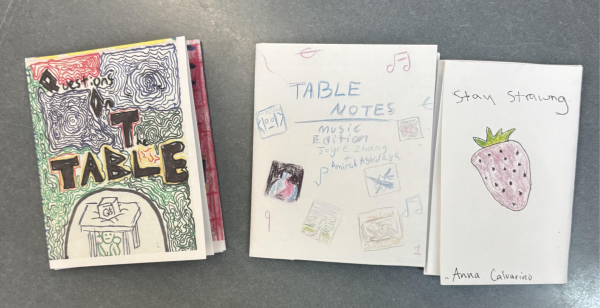
At the time of writing the club is exploring “Rage” in their Zines. For this, Zhang created a zine featuring song recommendations for music that expresses the artist’s anger.
What surprised me most while attending a club meeting was that most people in the room had not even heard about zines before joining. So what made them sign up? “It seemed creative, and I had nothing better to do. It was a good combination,” explains Kelly. This club opened my eyes to a whole new world.”
Zine History: Zines Against the Magazine Machine
Zines began in the 1930s as a way for science fiction fans to speculate about sci-fi books and eventually shows and movies.
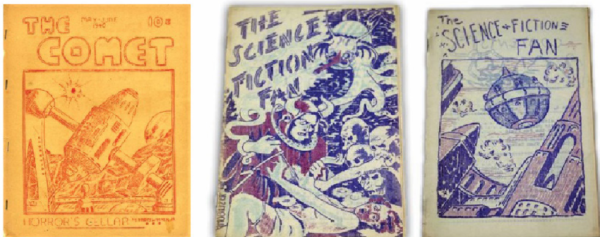
The subject matter of zines diversified to eventually cover other fandoms such as music, horror, comics, and even board games. Later in the 1970s and ’80s, zines were used by subculture groups (such as the punk and hardcore scenes) to share counterculture beliefs and art that would most likely not be published in a major periodical. As Calvarino explains: “With a magazine, it would be a long process [to produce the physical work]. The publisher and other people need to check your work, and they can prevent you from putting things in. But with a zine, it’s all about the person making it.”
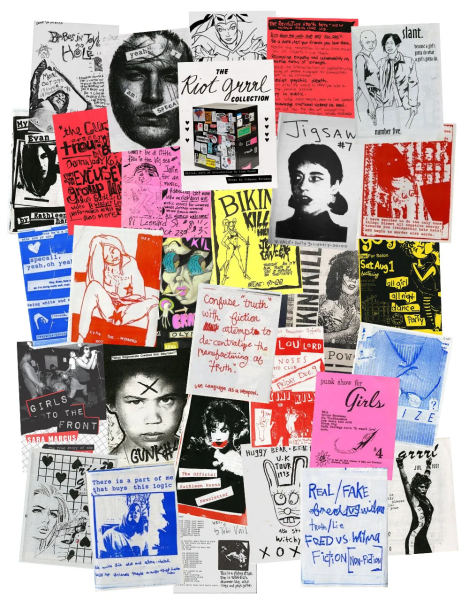
Starting in the 90s zines were adopted by the “riot grrrl” subculture, a punk-oriented feminist movement. These “riot grrrls” utilized zines to talk about their experiences with issues such as body image, sexuality, racism, and gender norms.
Zines have long served as a medium for marginalized and counter-culture groups to publish whatever they wanted. “Historically, zines were made by and for subordinate groups, groups that were facing oppression during the time. This was their way of communication, and expressing their voice,” says Blum.
Zine Scene Routine
The club meets every Wednesday in Room 334. Meetings begin with a slideshow presented by Calvarino and Blum. While the slideshows contain zine information and inspiration, they often include seemingly random or playful ephemera, much like zines.

When I visited, the slideshow began with a scale of hedgehog cakes to rank your mood. Later a slide presented several questions including “Are you cake or pie?”, “Do you like ketchup?” and “Do you follow the five-second rule?”, the latter of which proved quite controversial.
After the slideshow ended, club members combed through magazine clippings in search of interesting pieces for their collage zines, a process that Calvarino compared to thrifting. Some people work on collaborative zines in groups, while others prefer to work on their own.
Zine club is not restricted to the classroom, however. So far the club members have seen the exhibition “Copy Machine Manifestos: Artists Who Make Zines” at the Brooklyn Museum and the Mail Art Exhibition at NYU. They are also planning to attend the Brooklyn Museum’s Brooklyn Artists exhibition.
Roberts and O’Neal: Zine Dream Team
While Calvarino and Blum are the student leaders, Roberts and Ms. O’Neal founded the Zine Scene last spring. Roberts was inspired to begin the club after visiting last year’s exhibit at the Brooklyn Museum and then asked O’Neal, an avid indie comics fan and leader of the MBHS Comic Arts Club, to head the club with them.
“The first time I had ever heard of a zine was in middle school,” O’Neal says. “I was really into journaling and I had this book that someone gave me about how to journal. One of the things they talked about were zines because a zine is like a mini DIY magazine. I was like ‘Okay, whatever’ at the time.”
However, after moving to New York City, her opinion on zines began to change. In New York “you go to a used bookstore, and sometimes they have a whole section of zines that are really interesting,” she says. “They’re connected to so many things in the area and are way more relevant than a book written elsewhere.”
When asked why they were drawn to zines after seeing the Copy Machine Manifestoes exhibit, Roberts expressed a sentiment similar to the one Calvarino shared: “We are dictating how our voice is shared and where it is shared, whereas if you go through any type of publishing company, your words are going to go through several filters.”
However, the lack of censorship associated with zines has proven difficult to navigate in a school environment. “I think the spirit of the zine is ‘no filter,’” says Roberts, “although doing it under the school umbrella has brought up a few questions. Should we censor what the student says? Should we censor curse words? Should we guide students away from darker topics?”
As much as Roberts and O’Neal would like to make zines accessible to everyone, as of now production costs are too prohibitive to implement large-scale printing. It cost the group almost $20 to print one “zine anthology”, made up of pockets housing large, full-color copies of each zine. If you want to pick up a zine from the club, you might try to catch the next Zine Scene bake sale, where a free zine is included with the purchase of a pastry. Roberts and O’Neal are also looking into adapting the zines to a digital format, while still capturing the tactility that makes zines so special. That way, they can ensure that zine culture can continue to thrive in the 21st century.
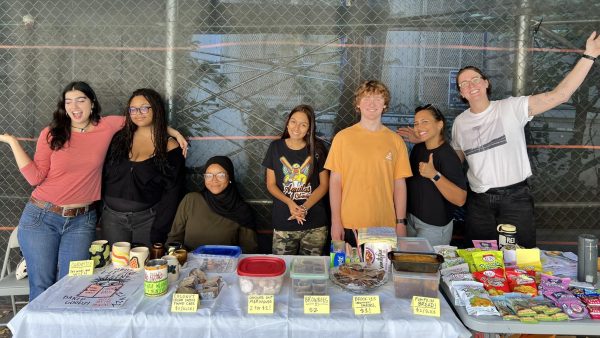

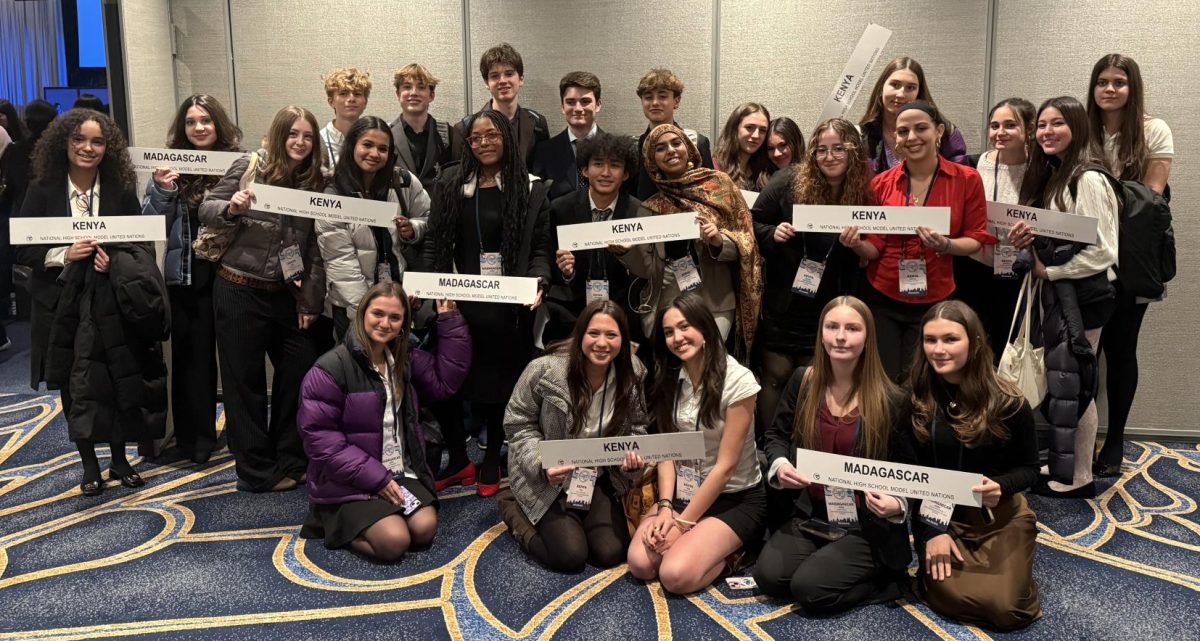
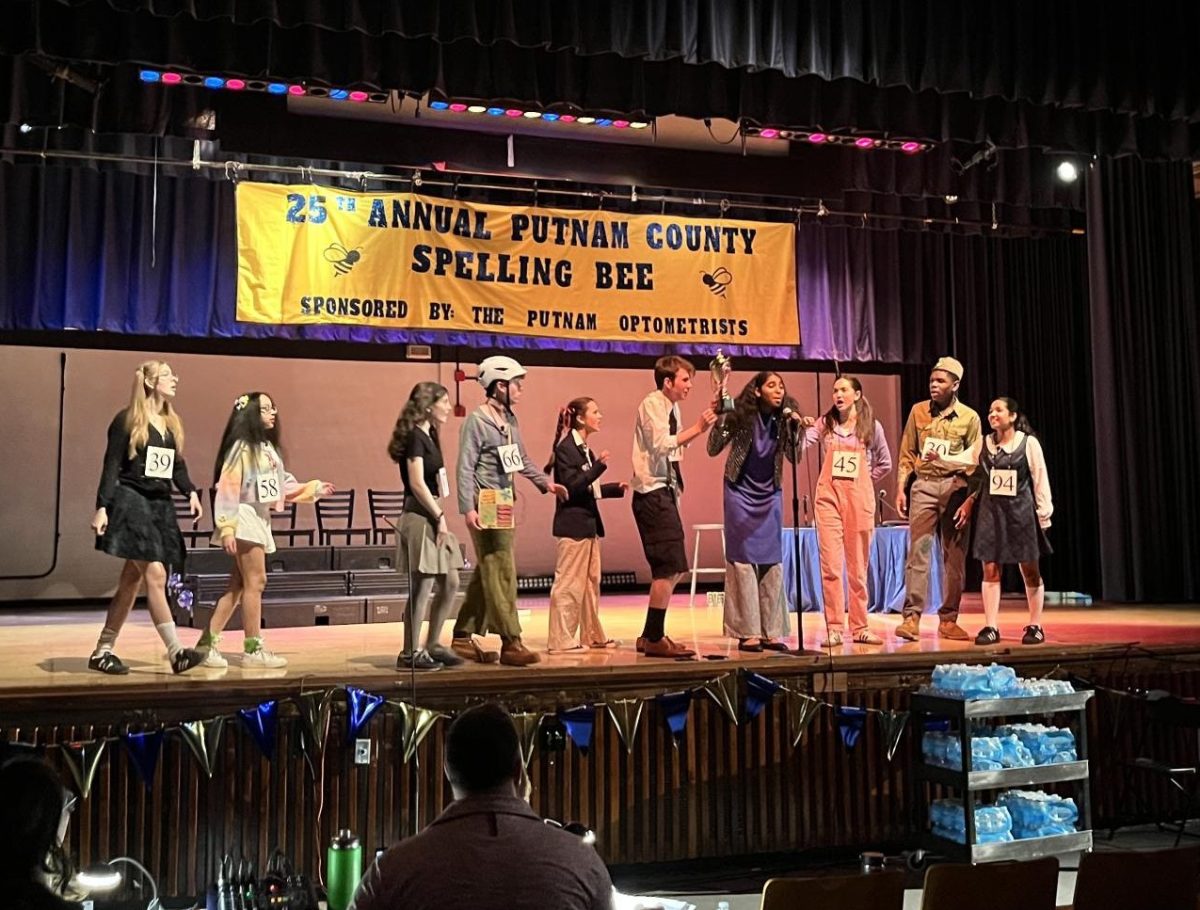

Tom O'Malley • Jan 9, 2025 at 4:49 pm
How much did they raise at the bake sale?
Madison • Jan 9, 2025 at 5:19 pm
We raised roughly $300 at the bake sale— it was so so so successful!
Finnegan Fox Kelly • Jan 9, 2025 at 8:55 pm
Much
Lauren O'Neal • Jan 13, 2025 at 12:36 pm
We actually raised over $434 at the sidewalk sale!
Madison Blum • Jan 14, 2025 at 12:18 pm
MY BADDD